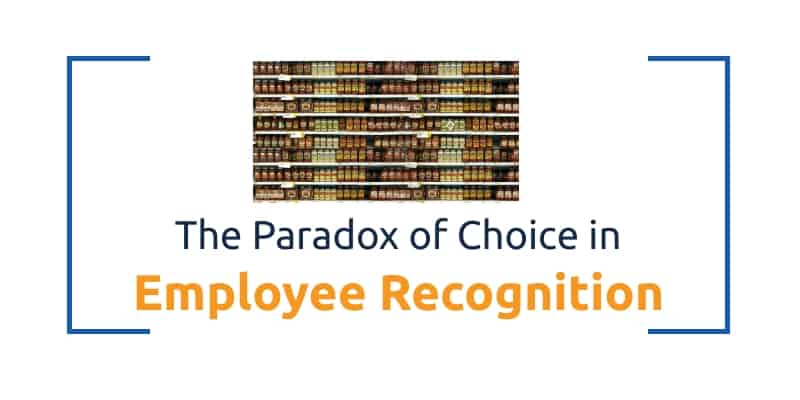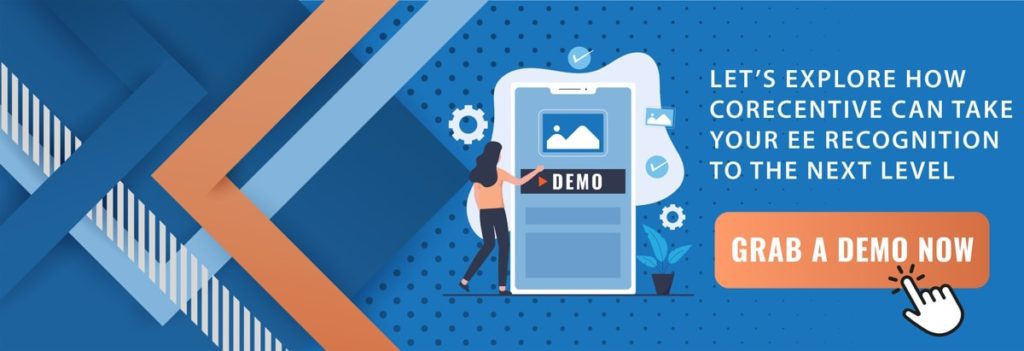Is too much choice a good thing or a bad thing? The question is not as simple as it seems. Consumer product market researchers have done many studies over the years, but how do those studies translate in the context of choice in employee recognition and incentive programs?
On the surface, this can appear to be a tough question to answer. In the many consumer marketing studies that have been done, numerous studies show offering consumers a greater choice can lead to “choice overload,” where the negative effects of too many options can weigh on a person’s psychological, emotional, and behavioral decision making. It is easy to see how this can have a detrimental effect on consumer purchasing results.
Now, in the context of choice in employee recognition and incentive programs, whereby employees have earned a reward and the opportunity to select a gift or an experience, would many gift choice options then be strategically sound?
The Paradox of Choice
In the study — which she describes in her TEDTalk “How to Make Choosing Easier,” Sheena Iyengar, a professor at Columbia University, performed an experiment focused on choice in 1995. In the study, Iyengar introduced shoppers in a gourmet grocery market with a display of jams. During different times, the display of jams would show as much as twenty-four varieties of jam, while at other times, the display only showed six varieties of jams. Iyengar found that 60 percent of customers were drawn to the large display, while only 40 percent visited the jams’ smaller display. But with twenty-four possible options, consumers bogged down their minds with analysis paralysis, and only 3% made a jam purchase. At the smaller display, nearly 30 percent of consumers who stopped ultimately bought a jar of the jam.
This idea was also demonstrated by Howard Moskowitz, a psychophysicist turned market researcher, who was engaged by Prego spaghetti sauce to enhance their spaghetti sauce product line in the 1980s. The study was to look at 45 pasta sauces with thousands of Americans and to rate each sauce. However, Moskowitz, using knowledge gained by working for Pepsi and Vlasic Pickles, recommended to Prego that they look at the basic and simple trends that the research data showed rather than offer the most popular winning varieties in the study. Ultimately, Prego made over $600 million by just one variety to its product line, extra chunky, by giving consumers a targeted choice instead of many choices.
However, these studies, and many others like them, were based on the premise of increasing sales, not on the perception of consumer power through having the ability to control what you want to buy.
Humans Crave Control
Today, we live in a world with endless choices. Researchers in a 2014 study from Deloitte Consumer Review described how we now live in a reality where broad choice is the norm. If you are an educated consumer in a product category, that can be a good thing. If you are a novice in a product category, such as automobiles, this will likely complicate your decision-making. Regardless of what camp you are in, these choices do present you with more power. , the researchers explained how we now live in a reality where truly expansive choice is the norm. While this complicates decision-making, it also provides more power to consumers.
Research by The Kellogg School of Management found that consumers with articulated preferences (experts) are more likely to choose from a large assortment than individuals without articulated preferences (novices). Consumers are more likely to feel overwhelmed by choice if they are unfamiliar with a product category, don’t have enough knowledge about the attributes, or don’t have a clear preference to dictate their decision.
How To Make Choice in Recognition Programs a Positive Experience for Employees?
It is your recognition solution provider’s responsibility to remove the pain point of choice overload and provide your employees with a user experience that provides relevant, meaningful, and targeted information as they seek to make a decision.
A good recognition platform will incorporate design and technology into its framework to make a choice more manageable. The first element that must be in place is a good shopping design interface.
A good design is faster, easier to navigate, more intuitive, and less frustrating. Searching for awards should be fun and not taxing. Key design features to look for in a great platform are: featured brands, featured categories, attribute grouping, and faceted browsing. What drives these features even further is how the platform learns about the user to serve up the appropriate categories and specific gifts an employee is likely interested in.
The best providers are using machine learning and neural net algorithms to find what your employees will love. By analyzing the patterns of the awards that an employee has searched, clicked, or redeemed for, a Reward AI will suggest new awards that match their interests. A personalized reward redemption platform with artificial intelligence will truly personalize the shopping experience, making it more engaging and rewarding for your employees.
Consumers or employees require assistance when searching or shopping on vast shopping or fulfillment sites. They are dared with an ever-growing amount of choice but also don’t want to walk away frustrated from the experience and decide to do nothing because the choice in and of itself was too much and too stressful. In the case of employee recognition award fulfillment, you want to present to employees a platform of choice that keeps them excited during their moment of recognition.
With CoreCentive’s global rewards gallery, you can enhance your recognition programs performance by incentivizing your employees with a state of the art recognition platform with selection and choice focused on empowering your employees.


